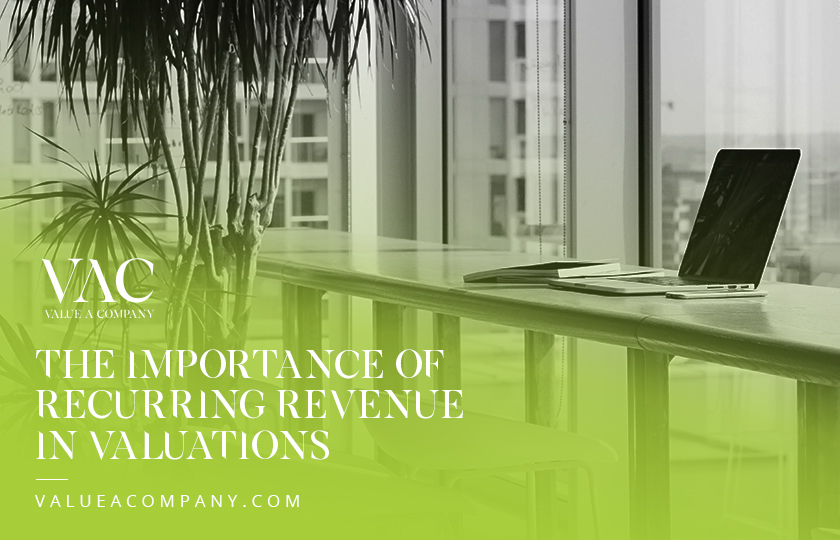
The Importance Of Recurring Revenue In Valuations
Recurring revenue is a segment of a business’s profits that is expected to continue to repeat earning in the future at generally stable and predictable levels. It can be relied upon to occur regularly with a reasonable amount of confidence. Recurring revenue is important in valuing a company for a merger or an acquisition because it represents a consistent stream of earnings that helps predict the company’s future profitability. If you are selling your business, having recurring revenue makes it much more desirable. It lowers the risk that business will see dramatic shifts from month to month—something that is very significant for buyers.
Recurring revenue can take different forms across different sectors, often depending on the nature of the business.
• Long-Term Deals: Many companies use long-term contracts to keep their customers paying for regular use of their product or service. Because the customers are in a legally binding arrangement, the businesses can record the future revenue according to the durations and amounts specified in the contracts with fair certainty. And should the customer break the contract, cancellation charges help to account for that portion of the recurring revenue, making for more accurate forecasting of revenue under all circumstances.
• Automatic Subscriptions Renewals: Subscription packages that carry auto-renewal policies are also solid sources of recurring revenue for companies. This can be counted on for the duration of the customers’ subscriptions, and providing incentive to get the customers to keep renewing their subscriptions. Monthly recurring revenue can be calculated by multiplying the total number of paying customers by the average revenue per user.
• Supplementary Products: Recurring revenue can also be derived from selling a product that can only be used with other products made by the same company, such as single-brew coffee pods or replaceable razor attachments. As long as something always requires refills, the sales can be relied on for recurring revenues for a business.
• Strong Brand Loyalty: Companies that have been around for a while and have well-known brands that carry strong customer bases can be fairly confident that their customers will keep coming back for more.
Measuring Recurring Revenue
Recurring revenue is usually measured in one of two ways: Annual Recurring Revenue (ARR) and Monthly Recurring Revenue (MRR). ARR is used for longer-term forecasts while MRR is used for the shorter term. Which metric is right for your company depends on the nature of your business, such as your business size, subscription lengths, and the complexity of your business model. It also depends on what you intend to use the measurement for. ARR is helpful in predicting long-term growth and visualizing the size of your business. MRR is good for short-term planning, measuring the success of recent rollouts, and monitoring any seasonal patterns.
How to Increase Recurring Revenue
Gaining more customers is the most obvious path to increasing your company’s recurring revenue. But there are other strategies that you can focus on as well.
• Reduce Customer Acquisition Costs: Utilize marketing automation, hone in on your target audience, and leverage already existing resources such as social media and reviews.
• Upsell to Your Existing Customers: Identify customers who may be looking for an upgraded feature, or cross-sell them another product you offer that meets their needs.
• Increase retention: Customer acquisition is way more expensive than customer retention. Focus on preventing losing customers because of simple things that can be addressed, such as expiring credit cards, and make sure your customer experience is as high quality as possible. Happy and satisfied customers are more likely to stick around.
Increasing your business’s recurring revenue can increase its valuation in the eyes of a potential acquirer for many reasons. It’s helpful in creating a baseline for measuring future benchmarks, and better understanding the company’s durability, visibility, scalability, and flexibility. It can also be helpful in managing expenses, which can minimize disruption to business flow.
